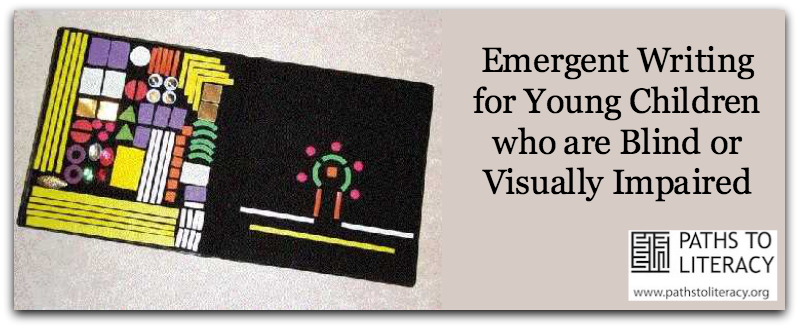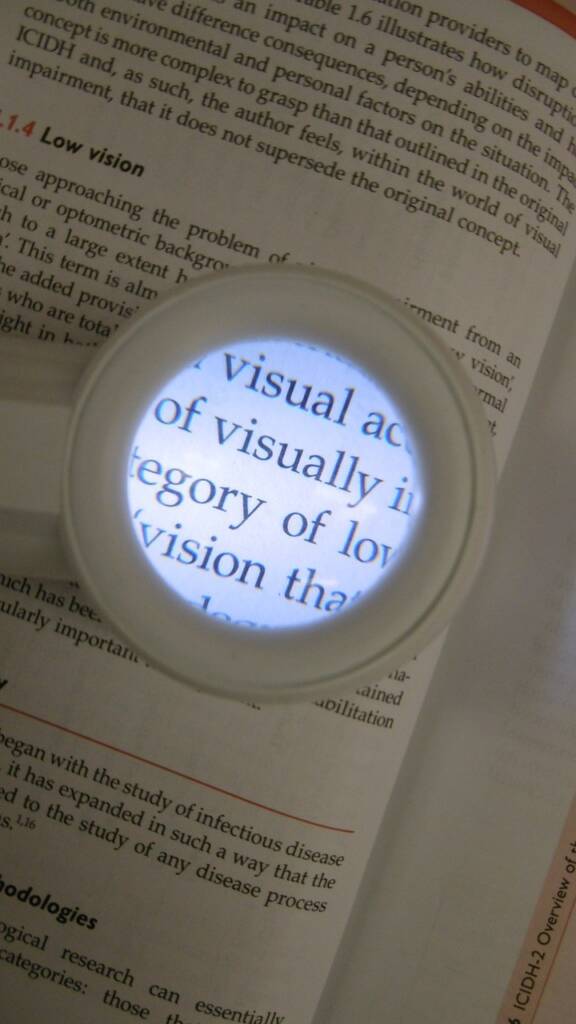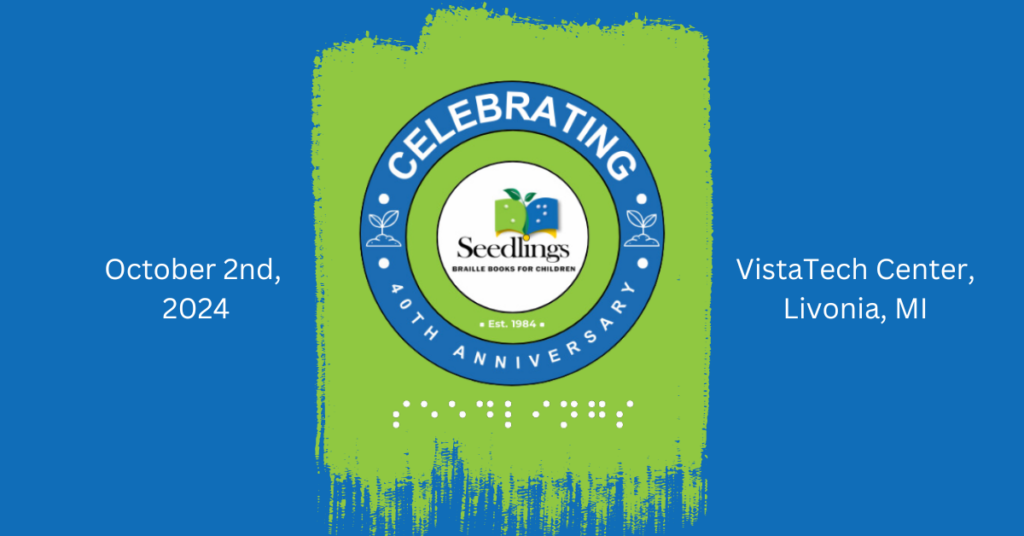Provide access to writing tools from a very early age!
It is crucial to provide access to writing tools from a very early age for children who are blind or visually impaired. Most sighted children have had a great deal of experience holding a pencil, drawing, scribbling well before they are taught to write. Through this practice and exploration, they are developing their fine motor skills and coordination, as well as becoming familiar with the mechanics of writing.
Although not all children who are blind will scribble, they can have the same type of experience developmentally using manipulatives and story boards, as well as braille writing tools to practice drawing, making raised dots and lines. See Scribbling with My Son Who Is Deafblind.
Drawing and Creating Tactile Images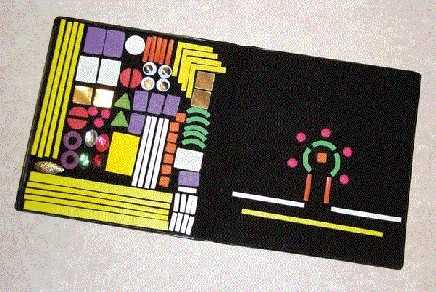
Children who are blind and visually impaired can enjoy making tactile drawings and graphics using a variety of materials. Adding sand or textured materials to paint can help children who are blind to experiment with making lines or shapes on paper. Many children enjoy using craft materials such as Wikki Stix or puff paint to create tactile images, and felt boards can also give children a chance to experiment with creating tactile drawings.
The Picture Maker: Wheatley Tactile Diagramming Kit is an interactive tactile board used to quickly create tactile diagrams for numerous educational purposes. It is available from APH (American Printing House for the Blind).
Tactile Graphics Storybooks
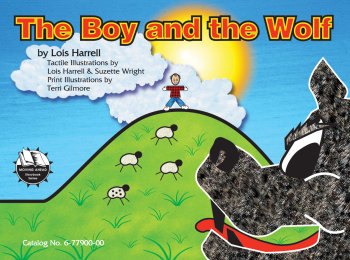
Tactile Graphic Storybooks help to bridge the gap to abstract tactile graphics. They are designed to be the next step for preschool and kindergarten students who have had some experience with simple tactile representations. One example of these is The Boy and the Wolf from APH.
This rhyming story by Lois Harrell (2011) features a twist on the classic tale of the boy who cried wolf. Simple raised line symbols represent the Wolf, the Boy, and his small flock of sheep. As the story is read, the child is invited to tactually search the page for these characters, to count and compare like and different pairs of sheep, and notice differing orientations. The story and its graphics introduce a variety of concepts: left, right, top, bottom, near, far, first, last. A simple key presents the symbols used in the book. Includes a storyboard and symbols for the story’s characters, which permit the child to create his own tactile displays. As the child retells the story using the storyboard, he gains understanding of how tactile graphics can be used to symbolize objects and show spatial position.
Braille Drawings
Drawings can be created using a braille writer or slate and stylus. The resources below offer specific suggestions on how to draw using a braille writer. The directions require knowledge of the braille alphabet and contractions, so developmentally this is more 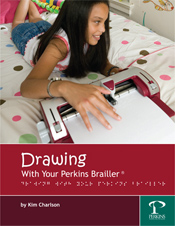 difficult than scribbling or the drawing that pre-schoolers often do. Here are some ideas to help you get started:
difficult than scribbling or the drawing that pre-schoolers often do. Here are some ideas to help you get started:
Braille Drawings on this site have been contributed by people in the field. Some have step-by-step instructions so that students can make them themselves. Others are files that are ready to be embossed.
Braille Drawings from Perkins School for the Blind offers suggestions for creating braille drawings, and invites others to submit braille pictures.
So What About Drawing? Instructions for drawing using a braille writer (2003) by Marie Porter is a 41-page book containing thirty drawings with step-by-step instructions for creating pictures of everything from animals to sailboats and fancy hearts. The instructions assume the knowledge of braille letters and contractions.
Drawing With Your Perkins Brailler: An activity guide to creating tactile drawings was written by Braille & Talking Book Library Director, Kim Charlson and contains step-by-step directions for creating 36 different drawings ranging from basic to highly intricate. Drawings include shapes, various animals, and pictures with holiday and transportation themes. The actual braille pictures are included to show what the drawings will look and feel like when completed. This book shows both sighted and blind readers that braille can be used to create visual pictures. Available in large print and braille editions.
